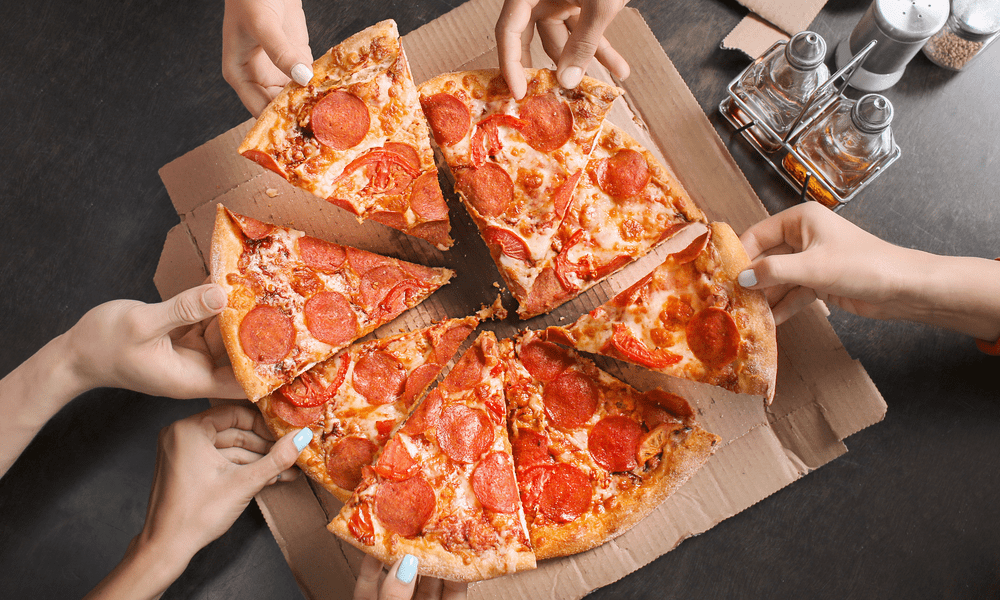Pizza is one of the most beloved foods globally, a true culinary chameleon that can be tailored to fit almost any taste. Originating from Italy, this versatile dish has taken on a life of its own, with countless variations and styles. In this edition, we’ll delve into the rich history of pizza, explore its many forms, share some mouthwatering recipes, and answer frequently asked questions about this universally adored dish.
The History of Pizza
Ancient Beginnings
The concept of pizza has ancient roots, tracing back to the times of the Greeks, Egyptians, and Romans who baked flatbreads and topped them with various ingredients. These early versions laid the groundwork for what would eventually become pizza.
Birth of Modern Pizza
Modern pizza as we know it originated in Naples, Italy, in the late 18th century. The poor in Naples needed cheap, quick, and tasty food, which led to the development of the pizza. The earliest pizzas were simple, consisting of dough, tomatoes, cheese, and a few other ingredients.
Margherita: The Iconic Pizza
In 1889, pizza gained royal approval when Queen Margherita of Savoy visited Naples. She enjoyed a pizza topped with tomatoes, mozzarella, and basil, resembling the Italian flag’s colors. This pizza was named in her honor and remains a classic to this day.
Types of Pizza Around the World
Neapolitan Pizza
The original pizza, Neapolitan pizza, is known for its simplicity and adherence to tradition. It features a thin, soft crust, San Marzano tomatoes, fresh mozzarella, basil, and olive oil. Neapolitan pizza is baked in a wood-fired oven at high temperatures, giving it a unique flavor and texture.
New York-Style Pizza
Characterized by its large, foldable slices and crispy yet pliable crust, New York-style pizza has become an American staple. It is typically topped with tomato sauce and mozzarella cheese, with a wide variety of additional toppings available.
Chicago Deep-Dish Pizza
Chicago deep-dish pizza, as the name suggests, is known for its deep, pie-like crust. The cheese goes directly on the dough, followed by various toppings, and then a thick layer of tomato sauce. This pizza is hearty and often eaten with a knife and fork.
Sicilian Pizza
Sicilian pizza, or “Sfincione,” has a thick, spongy crust and is usually rectangular. It is often topped with onions, anchovies, tomatoes, herbs, and breadcrumbs, with or without cheese. The American version of Sicilian pizza tends to be thicker and cheesier.
California Pizza
California-style pizza is known for its innovative toppings and thin, crisp crust. Pioneered by chefs like Wolfgang Puck, this style incorporates non-traditional ingredients like barbecue chicken, goat cheese, and artichokes.
Detroit Pizza
Detroit-style pizza features a thick, chewy crust that is crispy on the edges due to being baked in a well-oiled pan. It is typically topped with pepperoni and a generous amount of brick cheese, and the sauce is layered on top of the cheese and toppings.
Making the Perfect Pizza at Home
The Dough
Ingredients
- 4 cups of all-purpose flour
- 1 ½ cups of warm water (110°F)
- 2 ¼ teaspoons of active dry yeast
- 2 teaspoons of sugar
- 2 teaspoons of salt
- 2 tablespoons of olive oil
Instructions
- Activate the Yeast: In a small bowl, dissolve sugar in warm water. Sprinkle yeast on top and let it sit until frothy, about 5-10 minutes.
- Make the Dough: In a large bowl, combine flour and salt. Make a well in the center and add the yeast mixture and olive oil. Mix until a dough forms.
- Knead the Dough: Transfer the dough to a floured surface and knead for about 10 minutes, until smooth and elastic.
- First Rise: Place the dough in a lightly oiled bowl, cover with a damp cloth, and let it rise in a warm place for 1-2 hours, or until doubled in size.
- Shape the Dough: Punch down the dough and divide it into portions. Shape each portion into a ball and let them rest for 15 minutes before rolling out.
The Sauce
Ingredients
- 1 can (28 oz) of San Marzano tomatoes
- 2 cloves of garlic, minced
- 2 tablespoons of olive oil
- 1 teaspoon of salt
- 1 teaspoon of sugar
- 1 teaspoon of dried oregano
- Fresh basil leaves (optional)
Instructions
- Prepare the Tomatoes: Crush the tomatoes by hand or use a food processor for a smoother sauce.
- Cook the Sauce: In a saucepan, heat olive oil over medium heat. Add garlic and sauté until fragrant. Add the tomatoes, salt, sugar, and oregano. Simmer for 20-30 minutes until thickened. Add fresh basil leaves if desired.
The Toppings
Pizza toppings can be as simple or extravagant as you like. Classic toppings include:
- Mozzarella cheese
- Pepperoni
- Sausage
- Bell peppers
- Onions
- Mushrooms
- Olives
For a gourmet twist, try toppings like:
- Prosciutto
- Arugula
- Goat cheese
- Sun-dried tomatoes
- Truffle oil
Assembling and Baking
- Preheat the Oven: If using a pizza stone, place it in the oven and preheat to 500°F (260°C) for at least 30 minutes.
- Shape the Dough: On a floured surface, roll out the dough to your desired thickness.
- Add the Sauce: Spread a thin layer of sauce over the dough, leaving a small border for the crust.
- Add Toppings: Sprinkle your choice of cheese and toppings evenly over the sauce.
- Bake the Pizza: Transfer the pizza to the preheated stone or a baking sheet. Bake for 10-15 minutes, or until the crust is golden and the cheese is bubbly and slightly browned.
- Enjoy: Slice and serve your homemade pizza hot from the oven.
Frequently Asked Questions (FAQ)
1. What is the best flour to use for pizza dough?
Answer: The best flour for pizza dough depends on the style of pizza you’re making. For a classic Neapolitan pizza, Italian “00” flour is preferred for its fine texture and high gluten content, which creates a tender yet chewy crust. For New York-style or other types of pizza, all-purpose or bread flour works well, providing a good balance of chewiness and crispiness.
2. Can I make pizza dough in advance?
Answer: Yes, you can make pizza dough in advance. After the dough has risen, you can store it in the refrigerator for up to 3 days. For longer storage, divide the dough into portions, wrap each in plastic wrap, and freeze for up to 3 months. Thaw the dough in the refrigerator overnight before using.
3. How do I prevent my pizza from sticking to the peel?
Answer: To prevent sticking, ensure your pizza peel is well-floured before placing the dough on it. You can also use a mixture of flour and semolina for better results. Additionally, work quickly when assembling the pizza to minimize the time the dough spends on the peel.
4. What are some healthy pizza toppings?
Answer: Healthy pizza toppings include a variety of vegetables like bell peppers, mushrooms, onions, spinach, and tomatoes. Lean proteins like grilled chicken or turkey sausage are also good options. For cheese, consider using part-skim mozzarella or adding a sprinkle of Parmesan for flavor without adding too many calories.
5. How can I achieve a crispy crust at home?
Answer: To achieve a crispy crust, preheat your oven to the highest temperature it can safely go, typically around 500°F (260°C). Use a pizza stone or steel to bake the pizza, as these materials retain and evenly distribute heat. Bake the pizza on the lowest oven rack to ensure the bottom crisps up nicely.
6. Can I make pizza without a traditional oven?
Answer: Yes, you can make pizza without a traditional oven. Alternatives include using a stovetop pizza pan, grilling the pizza, or even using a microwave with a browning tray. Each method has its own set of instructions, but the key is to ensure the dough is cooked through and the toppings are heated properly.
7. What is the difference between pizza sauce and marinara sauce?
Answer: Pizza sauce is typically thicker and more concentrated than marinara sauce. It is made specifically for spreading on pizza dough and often contains fewer chunks of tomatoes. Marinara sauce is usually thinner and may contain more herbs and garlic, making it better suited for pasta dishes.
8. How do I reheat leftover pizza without making it soggy?
Answer: To reheat pizza without making it soggy, use an oven or toaster oven set to 375°F (190°C) and bake for 5-10 minutes until heated through. You can also reheat pizza in a skillet on the stovetop over medium heat, covering it with a lid to help the cheese melt without drying out the crust.
9. What are some popular vegetarian pizza options?
Answer: Popular vegetarian pizza options include Margherita, with tomatoes, mozzarella, and basil; Veggie Lovers, with bell peppers, onions, mushrooms, and olives; and White Pizza, with a ricotta base, garlic, spinach, and mozzarella. Experimenting with different vegetables and cheeses can yield delicious results.
10. Can I make gluten-free pizza dough?
Yes, you can make gluten



